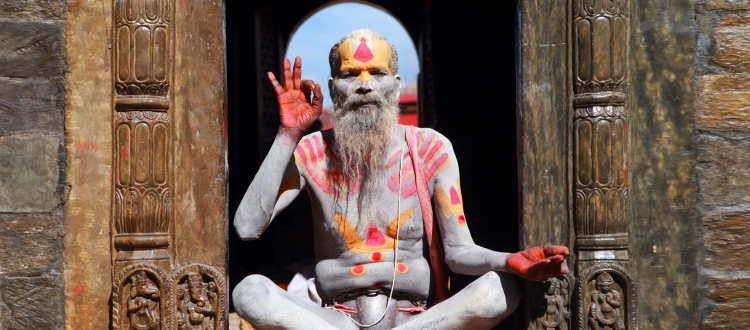Different dynasties, such as the Maurya, Satavahanas, Western Satraps, and Kushans, supported Buddhism and Jainism by building large architectural monuments such as stupas and cave complexes during their reign.
The Maurya dynasty, which existed in ancient India, was known for patronizing both Jainism and Buddhism, as well as supporting the construction of large cave complexes, stupas, and other architectural monuments. These structures were used by monastic orders during the rainy season.
After the decline of the .
About Jainism

Jainism is an ancient Indian religion. Jainism traces its spiritual ideas and history through a succession of twenty-four Tirthankaras, with the first in the current time cycle being Rishabhadeva, whom the tradition holds to have lived millions of years ago; the twenty-third tirthankara Parshvanatha, whom historians date to 9th century BCE; and the twenty-fourth tirthankara, Mahavira around 600 BCE. Jainism is considered to be an eternal dharma with the tirthankaras guiding every time cycle of the cosmology. The three main pillars of Jainism are ahiṃsā (non-violence), anekāntavāda (non-absolutism), and aparigraha (asceticism).
Hinduism & Buddhism – In context of Nepal
Today, Hinduism is referred to as the oldest living religion followed in the whole world. More than 3000+ deities are found in some places near the homes of Hindus where they love and worship. Though the underlying philosophies of Hinduism are the same, the belief system has been adjusted over nearly 3000 years of existence. The concept is still the same and is adjusted over time to cope with social changes of a society.
Before .
Health at Your Fingertips – Mudras
A mudra is used in yoga, Buddhism, Hinduism, and Jainism as a sacred and symbolic gesture. The most well-known mudras are used as a way of channeling the flow of essential life force energy known as prana during yoga and meditation practice. The term translates as "gesture,"' "mark" or "seal" that is derived from Sanskrit.
Although they have been around for thousands of years and have appeared in various religions and cultures, including Christianity, Egyptian .
All you need to know about Yoga
Yoga is a group of physical, mental, and spiritual practices or disciplines which originated in ancient India. Yoga is one of the six astika schools of Hindu philosophical traditions. There is a broad variety of yoga schools, practices, and goals in Hinduism, Buddhism, and Jainism.
The term "Yoga" in the Western world often denotes a modern form of hatha yoga and yoga as exercise, consisting largely of the postures or asanas.
Origin of Yoga
The word Yoga .
Depicting 5 Forms of Manjushri Thangka
Wutaishan Mountain in China is considered special for the Buddhist deity/bodhisattva Manjushri. According to oral history and Chinese literature, it was Drogön Chögyal Phagpa who first talked about the five different forms of Manjushri.
5 forms of Manjushree are represented on each of the five peaks: central and four directions. The Five Manjushri forms are not depicted in a consistent manner.
There are many iconographic differences appearing between the various paintings be they central figures or .
Nyingma Lineage tree thangka with explanation chart
The subject depicted in this thangka is called Guruparampara, a “Line of Teachers.”
It depicts the family tree of Nyingma lineage, as it were, and its function is to indicate a line of descent.
The meaning of this presentation is to show a refuge for believers. It creates a kind of structure with a number of deities and teachers in whom devotees take refuge, because they will help believers in the course of their spiritual development.
Gurus .
Goddess Durga – The killer of demon Durgamasur
Durga is the original manifested form of Mother Parvati or Adi-Parashakti. The meaning of Durga is "the inaccessible" or "the invincible", is the most popular incarnation of Devi and one of the main forms of the Goddess Shakti in the Hindu pantheon. Parvati took the form of Durga to kill the demon Durgamasur.
Goddess Durga and festivals
In Nepal, Goddess Durga is worshiped during Dashain festival. Durga is worshipped in ten forms with one form for each day in Nepal and celebrated across the country .
















